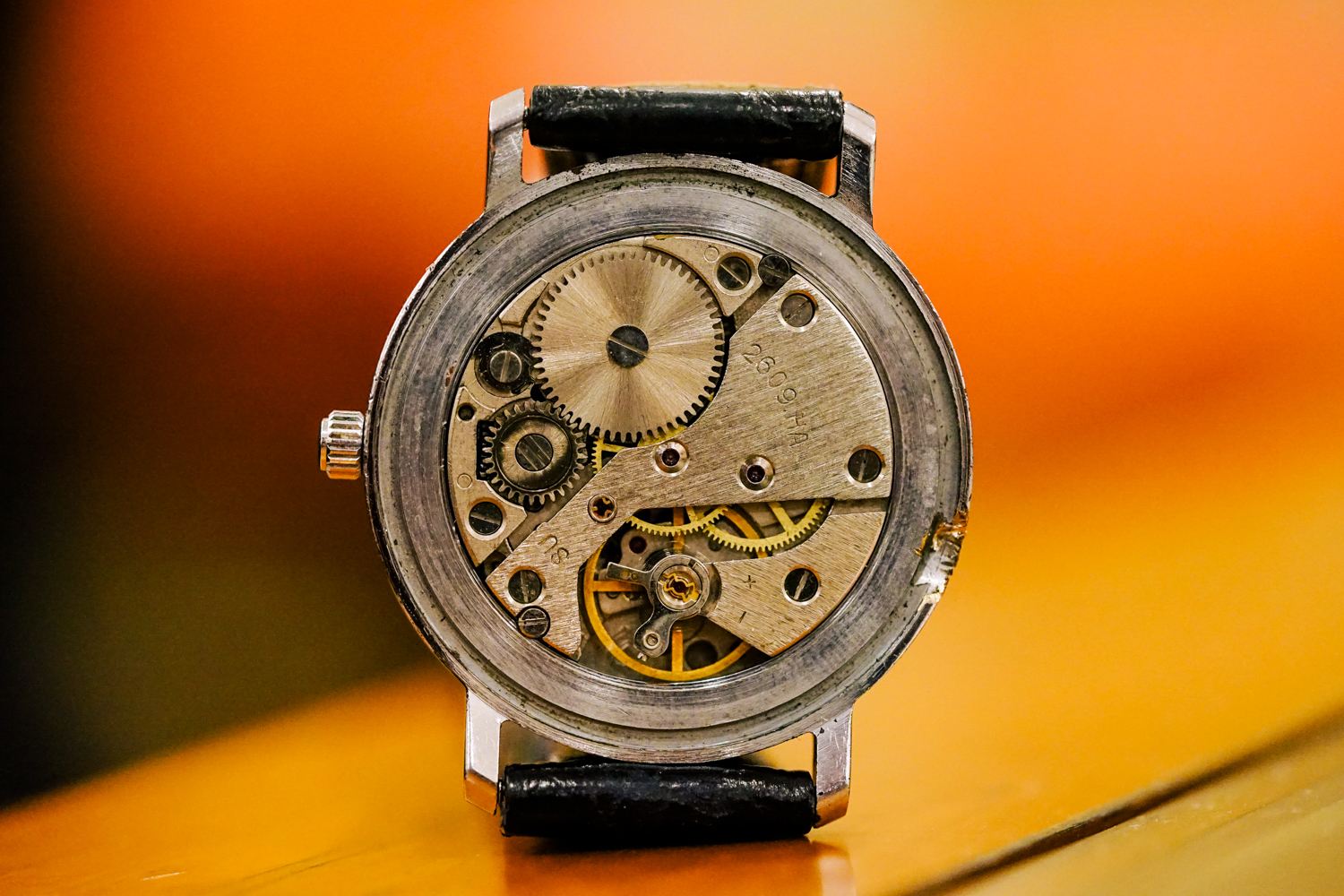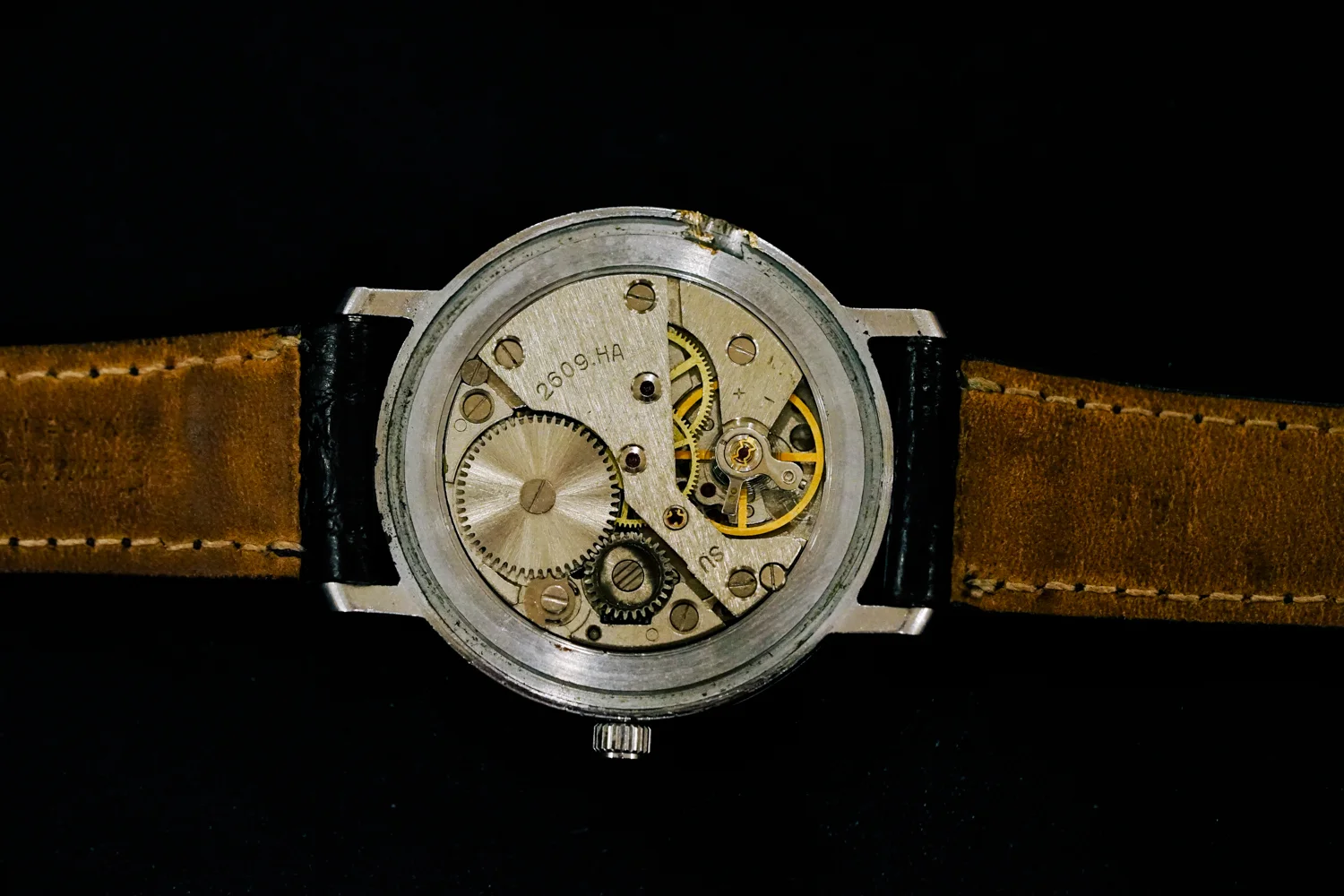Raketa Copernic
Watch reviewed is part of a private collection
Funky watches don’t always carry a hefty price tag. Nor do they even have to be Swiss.
The Petrodvorets Watch Factory in St Petersburg has a fascinating history. It was founded by Peter the Great in 1721 as the Peterhof Lapidary Works, making hardstone cravings, and remains the oldest factory in Russia. It is also one of the few watch brands in the world still producing their movements in-house from start to finish, including hairsprings and escapements. Originally this was a strategic move, one of national security importance, as it meant being able to supply their military with domestically made timepieces. From 1945, it manufactured the Soviet Pobeda watches; the name, meaning “Victory” in Russian, was chosen by Stalin himself. The Petrodvorets didn’t end their government association there; to commemorate Yuri Gagarin’s first manned flight on a Russian rocket, the Vostok 1, the Petrodvorets Watch Factory named its watches “Raketa”, meaning “Rocket” in Russian.
Following the fall of the Berlin Wall and the dismantling of the Soviet Union, the Raketa factory was not spared from privatisation, and was nearly closed down by its new owners who wanted to cash in on the real estate and write off the factory. Somehow, the brand never ceased production; relying on government orders for the military, the Interior Ministry, and other government bodies to survive. The brand continues to produce watches today; their current line-up includes an updated version of the Copernic.
So what?
Well, it’s Russian. Most people are surprised when they find out the watch is Russian. Certainly, on close inspection, its heritage is quite clear; as a whole, its burst of ingenuity, particularly of the dial and hands, works very well together. The dial and crystal, on the other hand, is where the most fun is to be had. This example has a silver, grain finished dial, giving a matte appearance. The circular hands, dubbed as “the sun and moon hands”, are a tribute to Copernicus, the namesake for this collection. Creating a sort of eclipse every hour, it’s a whimsical play on a celestially-inspired design, and one rather appropriate for the brand. The markers are surprisingly detailed: at 12, 3, 6 and 9 they are slightly larger and faceted discs in gold; the rest are flat. The minute track, with rail details, sits inside the markers. The raised box crystal, when viewed side on, resembles that of a top hat in shape. All of these elements come together to give a watch that is unusual and fascinating.
The brand remains fascinating, even today. Having lured three top watchmakers from Switzerland, and backed by strong performance in the Russian market, Raketa is preparing for an international expansion over the next few years. Interestingly (though, perhaps, not surprisingly, given their close ties to the Russian Government), in a job ad posted in August 2016 for the brand in France, two of the requirements of employment were regularly reporting to the Russian Secret Service at the Embassy in Paris, and accepting Crimea as Russian. If you want to read more about this ad, coverage can be found here.
The problem with it is...
The manual wind movement is reflective of the era of its production; remember the 80s, when the Swiss were hit with the quartz crisis, and Communism was still a thing? This watch, in a way, is the physical representation of Russia during that decade: adamant to persist with the Soviet ways, but acknowledging that change was required. The movement is functional, and brutally so: you won’t find any Cotes de Genève or snailing here. Even bevelling is minimal. The case is chrome, with an indent for opening the case back; yet another reflection of the utilitarian approach that was very much ingrained from the post-Revolution Soviet era.






